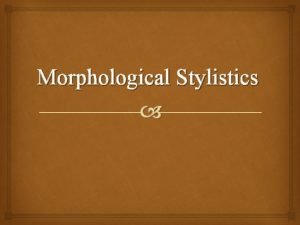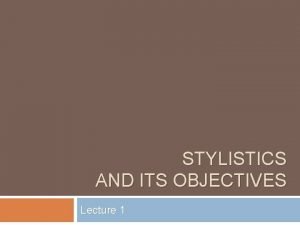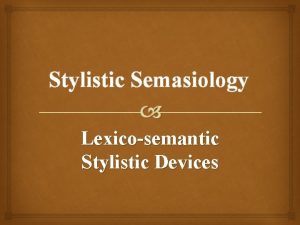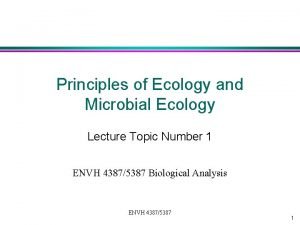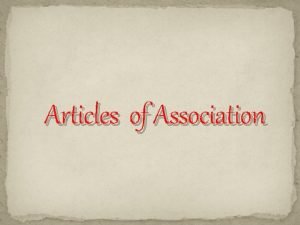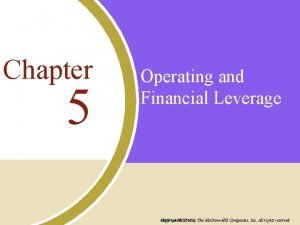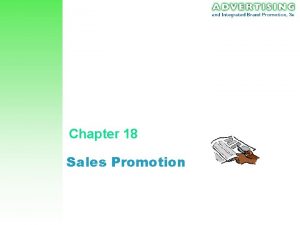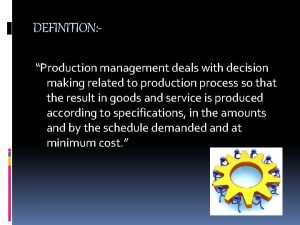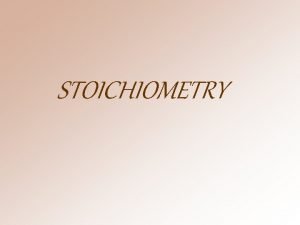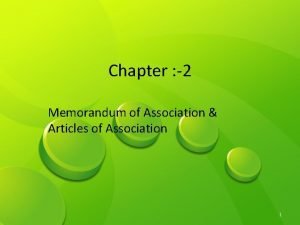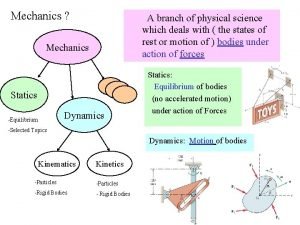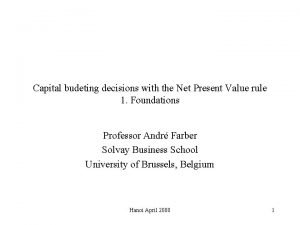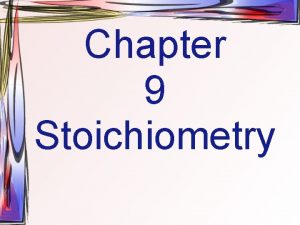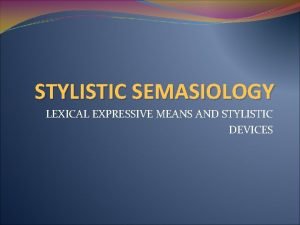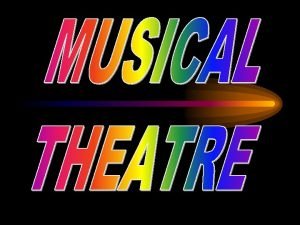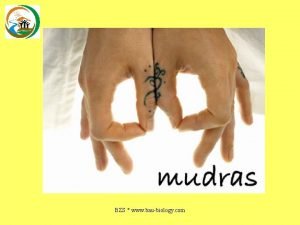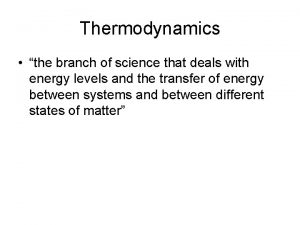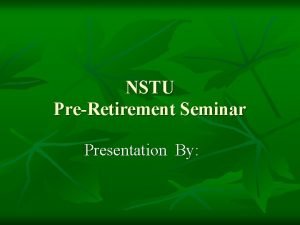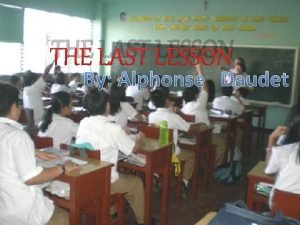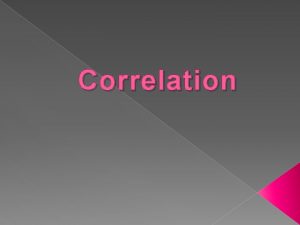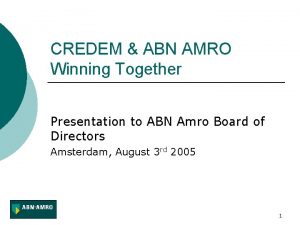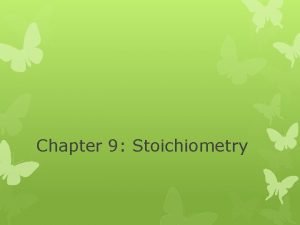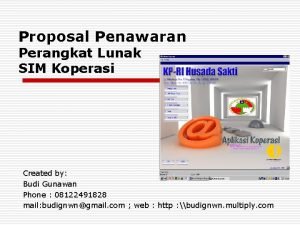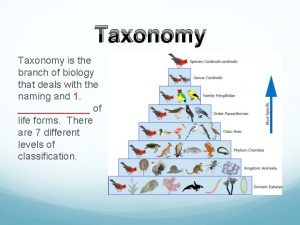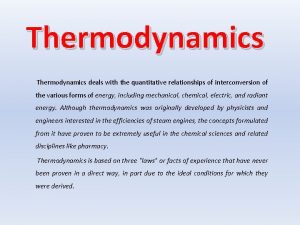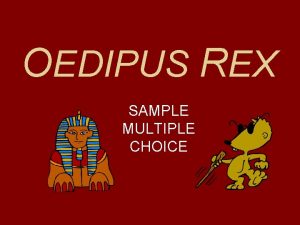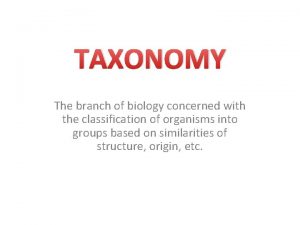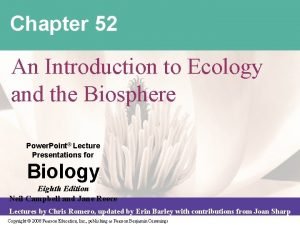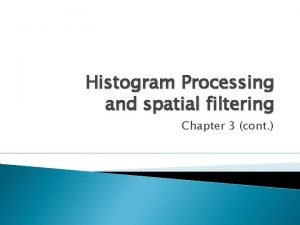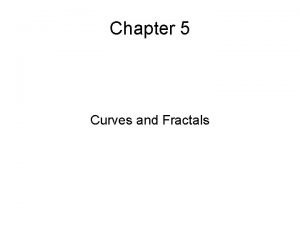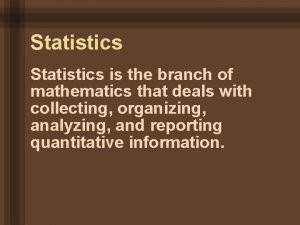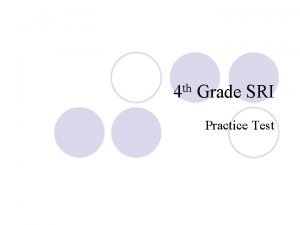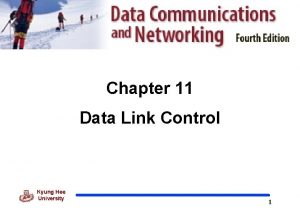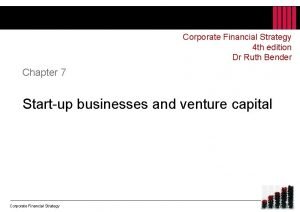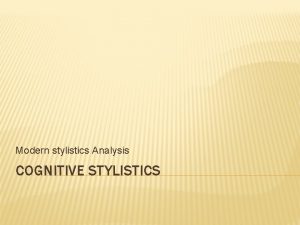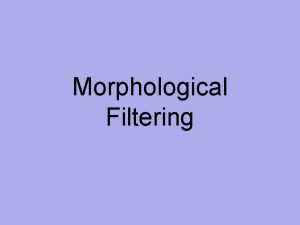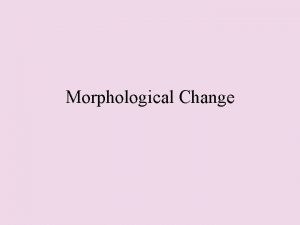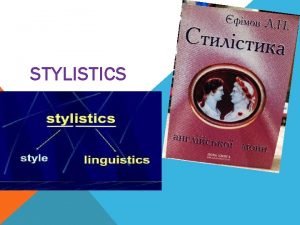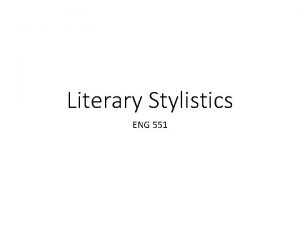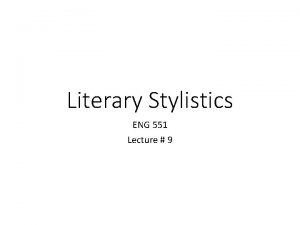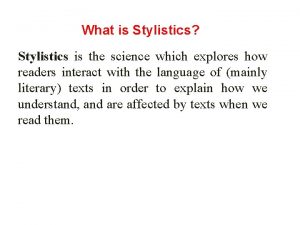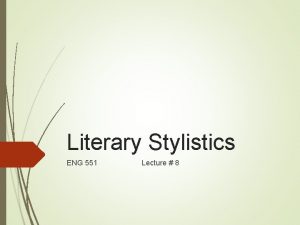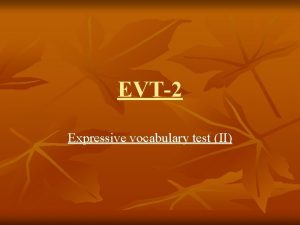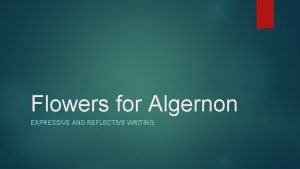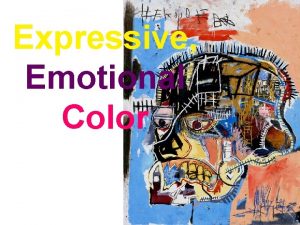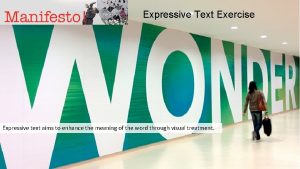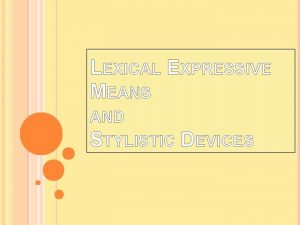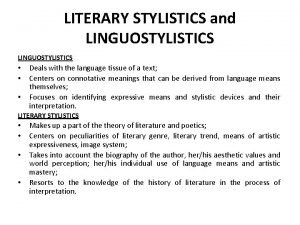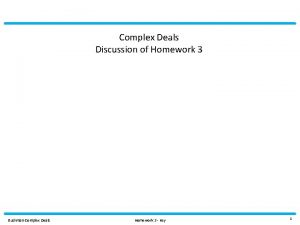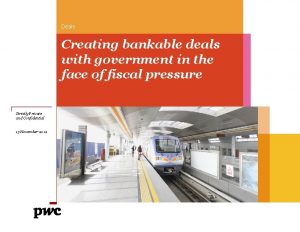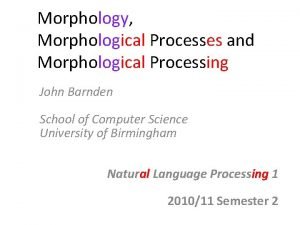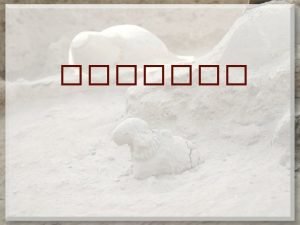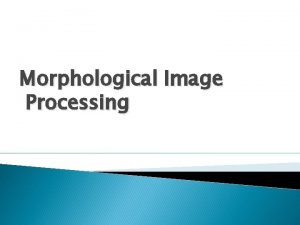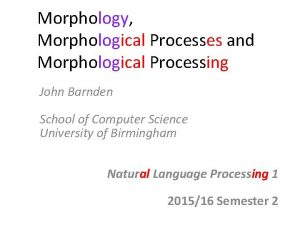Morphological Stylistics Morphological stylistics deals with morphological expressive










































![There are such common marks of punctuation: the full stop [. ], the There are such common marks of punctuation: the full stop [. ], the](https://slidetodoc.com/presentation_image_h/afdef539f79eca1e6b3e0668c776bcdb/image-43.jpg)






- Slides: 49

Morphological Stylistics

Morphological stylistics deals with morphological expressive means and stylistic devices. Words of all parts of speech have a great stylistic potential. Being placed in an unusual syntagmatic environment which changes their canonized grammatical characteristics and combinability, they acquire stylistic significance.

The central notion of morphological stylistics is the notion of transposition. Transposition is a divergence between the traditional usage of a neutral word and its situational (stylistic) usage.

Words of every part of speech are united by their semantic and grammatical properties. General lexico-grammatical meaning of nouns is substantivity, i. e. the ability to denote objects or abstract notions. Due to the diverse nature of substantivity, nouns are divided into proper, common, specific, abstract, material and collective.

Cases of transposition emerge, in particular, when specific nouns are used according to the rules of proper nouns usage, or vice versa. It results in creation of stylistic devices named antonomasia of personification.

Besides general lexico-grammatical meaning, nouns possess grammatical meanings of the category of number and the category of case. These meanings may also be used for stylistic objectives. According to the category of number, nouns are classified into countable and uncountable.

Each group has its own regularities of usage. When these regularities are broken for stylistic reasons, speech becomes expressive. Uncountable singularia tantum nouns, or countable nouns in the singular, occasionally realizing the meaning of more than oneness, evoke picturesque connotations.

Normally, the genitive case form is a form of animate nouns. When inanimate nouns are used in this form, their initial meaning of inanimateness is transposed. In such cases they render the meanings of time or distance (mile's walk, hour's time), part of a whole (book's page, table's leg), or qualitative characteristics (plan's failure, winter's snowdrifts, music's voice)

Stylistic potential of nouns is significantly reinforced by transpositions in the usage of articles as noun-determiners. Such transpositions occur against generally accepted normative postulates which run: articles are not used with names of persons and animals, some classes of geographical names, abstract nouns and names of material.

Uncommon usage of articles aims at importing specific shades of meaning into speech. Thus, the indefinite article combined with names of persons may denote one representative of a family, a person unknown to the communicants, a temporary feature of character.

Not less expressive are cases when the name of a person is used as a common noun preceded by the indefinite article.

Stylistic usage of the definite article takes place when names of persons are modified by limiting attributes, when a proper name denotes the whole family, or when a name of a person is modified by a descriptive attribute denoting a permanent feature of character. Suchlike deviations in the usage of articles are possible with other semantic classes of nouns: geographical names, abstract and material nouns.

Transposition of verbs is even more varied than that of nouns. I t is explained by a greater number of grammatical categories the meanings of which may be transposed.

Most expressive are tense forms, mood forms and voice forms. One of peculiar features of English tense forms is their polysemantism. The same form may realize various meanings in speech. Deviation from the general (most frequently realized) meaning makes verbs stylistically coloured.

Commonly, the present continuous tense denotes an action which takes place at the moment of speaking. But it may also denote a habitual action, an action which occupies a long period of time, and an action of the near future. In such cases the present continuous tense becomes synonymous with the present or future indefinite. But there is a difference.

There is a rule that verbs of sense perception and mental activity are not used in the continuous tense forms. This rule is often broken by the speaker intentionally or subconsciously. In both cases verbal forms convey additional stylistic meanings of subjective modality

One of peculiar verbal transpositions is the change of temporary planes of narration when events of the past or future are described by present tense forms. Such transposition brightens the narration, raises its emotional tension, expresses intrigue, makes the continuity of events visual and graphic.

Transposition is not the only way to make verbs expressive. A good many verbal forms are expressive in themselves. The imperative mood forms are not just commands, invitations, requests or prohibitions. They are a perfect means of rendering an abundance of human emotions.

A wide range of subjunctive mood forms offers a good stylistic choice of synonymous ways to verbalize one and the same idea.

General lexico-grammatical meaning of adjectives is that of qualitativeness. Qualitative adjectives are always estimative, that is why they are used as epithets and can form degrees of comparison.

Relative adjectives normally do not form degrees of comparison and serve as logical (nonstylistic) attributes. However, they may be occasionally transposed into qualitative. Such transposition imports originality and freshness in speech

Expressiveness of adjectives may be as well enhanced by non-grammatical transpositions in the formation of the degrees of comparison, when well-known rules of their formation are intentionally violated.

Expressive devices may be created by transposition of pronouns. When objective forms of personal pronouns are used predicatively instead of nominative forms, sentences obtain colloquial marking.

The meaning of the pronoun I may be contextually rendered by the pronouns we, you, one, he, she and others. The so-called "scientific we" is used in scientific prose instead of I for modesty reasons. The same replacement in a routine conversation creates a humoristic effect

When the pronoun you is replaced by the pronoun one, the statement becomes generalized, its information being projected not only to the listeners, but to the speaker himself. Stylistic effects may also be achieved by the usage of archaic pronouns.

Phonetic And Graphic Expressive Means And Stylistic Devices

Stylistically marked phonemes do not exist. Consequently, there are no expressive means on the phonological language level. Nevertheless, specific combinations of sounds may create different speech effects and devices.

Phonetic stylistic devices belong to versification and instrumentation types. Versification is the art of writing verses. It is the imaginative expression of emotion, thought, or narrative, mostly in metrical form and often using figurative language.

Poetry is actually the earliest form of literature, and was created precisely to be spoken - in the days before many could read. Poetry has traditionally been distinguished from prose (ordinary written language) by rhyme or the rhythmical arrangement of words (metre).

The main concepts of versification are rhyme and rhythm. Rhyme is the accord of syllables in words.

Such an accord is met at the end of two parallel lines in verses. Rhyme is a sound organizer, uniting lines into stanzas. Rhyme is created according to several patterns. Vertically, there are such rhymes: adjacent (aa, bb), cross (ab, ab) and reverse (ab, ba).

According to the variants of stress in the words being rhymed, rhymes are classified into male (the last syllables of the rhymed words are stressed), female (the next syllables to the last are stressed) and dactylic (the third syllables from the end are stressed).

Rhythm is a recurring stress pattern in poetry. It is an even alternation of stressed and unstressed syllables. Lines in verses are built with poetic feet. A foot is a combination of one stressed and one or two unstressed syllables. The most popular poetic feet are trochaic foot, iambus, dactyl, amphibrach, and anapest.

Instrumentation is the art of selecting and combining sounds in order to make utterances expressive and melodic. Instrumentation unites three basic stylistic devices: alliteration, assonance and onomatopoeia.

Alliteration is a stylistically motivated repetition of consonants. The repeated sound is often met at the beginning of words. Alliteration is often used in children's rhymes, because it emphasizes rhythm and makes memorizing easier.

The same effect is employed in advertising, so that slogans will stick in people's minds. Assonance is a stylistically motivated repetition of stressed vowels. The repeated sounds stand close together to create a euphonious effect and rhyme.

Just like alliteration, assonance makes texts easy to memorize. It is also popular in advertising for the same reason. Assonance is seldom met as an independent stylistic device. It is usually combined with alliteration, rhyming, and other devices

Onomatopoeia is a combination of sounds which imitate natural sounds: wind wailing, sea murmuring, rustling of leaves, bursts of thunder, etc. Words which represent this figure of speech have aural similarity with the things they describe.

Animal calls and sounds of insects are evoked onomatopoeically in all languages. Onomatopoeia is used for emphasis or stylistic effect. It is extensively featured in children's rhymes and poetry in general.

Expressiveness of speech may be also significantly enhanced by such phonetic means as tone. To the linguist "tone" means the quality of sound produced by the voice in uttering words. In a general sense, tone is the attitude of the speaker or writer as revealed in the choice of vocabulary or the intonation of speech.

Written or spoken communication might be described as having a tone which is, for instance, ironic, serious, flippant, threatening, light-hearted, or pessimistic. Attitude expressed in tone may be rendered con -sciously or unconsciously. It could be said that there is no such thing as a text or verbal utterance without a tone. In most cases, tone is either taken for granted, or perceived unconsciously.

Basic notions of graphic expressive means are punctuation, orthography or spelling, text segmentation, and type. Punctuation is used in writing to show the stress, rhythm and tone of the spoken word. It also aims at clarifying the meaning of sentences.
![There are such common marks of punctuation the full stop the There are such common marks of punctuation: the full stop [. ], the](https://slidetodoc.com/presentation_image_h/afdef539f79eca1e6b3e0668c776bcdb/image-43.jpg)
There are such common marks of punctuation: the full stop [. ], the comma [, ], the colon [: ], the semicolon [; ], brackets [()], dash [ - ], hyphen [ - ], the exclamation mark [! ], the oblique stroke [/ ]„ the interrogative (question) mark [ ? ], inverted commas (quotation marks) [" "], suspension marks [. . . ], the apostrophe [ ' ].

Text segmentation means the division of texts into smaller segments: paragraphs, chapters, sections and others. Some of the segments start with overlines (headings or headlines).

A paragraph is a group of sentences which deal with one topic and express a more or less completed idea or thought. The sentences in paragraphs are related to each other to produce an effect of unity. Paragraphs are used to divide a long piece of writing into separate sections. They give rhythm, variety and pace to writing.

Chapters and sections are major text segments. They may be compared with fragments of mosaic, which form the whole picture when put together. A heading is the name of a text or its segment. It tends to disclose the plot of narration. It should be garish and catching in order to attract the potential reader's attraction.

Text segmentation is just one of the components of layout. Layout is the physical organization of a text on the page, the screen, or any other medium of written communication. It refers to the visual conventions of arranging texts to assist reading and comprehension.

Good layout includes effective use of the following common features: page margins, paragraphs, justification, type style, italics, capitals, indentation, line spacing, centering, type size, bold, underlining.

There are particular conventions of layout in each functional style. Some of conventions are based purely on the function of the text, and some on tradition. The modern trend is towards layout which results in fast and easy reading of the page. Layout complements content in efficient communication. It facilitates the reading and the comprehensibility of the text.
 Morphological expressive means
Morphological expressive means Stylistic colouring
Stylistic colouring Lexico-semantic stylistic devices
Lexico-semantic stylistic devices Prosperity deals
Prosperity deals Stable community
Stable community Articles of association deals with
Articles of association deals with Financial leverage deals with
Financial leverage deals with Boyle's law deals with
Boyle's law deals with Trade incentives examples
Trade incentives examples Production management definition
Production management definition Stoichiometry deals with
Stoichiometry deals with Nonfiction deals with facts.
Nonfiction deals with facts. Stoichiometry deals with...
Stoichiometry deals with... Articles of association deals with
Articles of association deals with Law of transmissibility of forces
Law of transmissibility of forces Budeting
Budeting Composition stoichiometry deals with
Composition stoichiometry deals with Morphology deals with
Morphology deals with Lexical means
Lexical means Bodabil kahulugan
Bodabil kahulugan This document deals with
This document deals with Thermodynamics is the branch of science that deals with
Thermodynamics is the branch of science that deals with Taxonomy is the branch of science that deals with –
Taxonomy is the branch of science that deals with – Nstu discounts
Nstu discounts Marketing more than any other business function deals with
Marketing more than any other business function deals with The last lesson alphonse daudet
The last lesson alphonse daudet Large positive correlation
Large positive correlation Hydrology is science which deals with
Hydrology is science which deals with Descriptive lexicology
Descriptive lexicology Stoichiometry deals with
Stoichiometry deals with Fluid statics deals with fluid at rest
Fluid statics deals with fluid at rest Abn amro m&a deals
Abn amro m&a deals Systematics deals with
Systematics deals with Stoichiometry deals with.
Stoichiometry deals with. Needs wants and demands
Needs wants and demands Software deals
Software deals Taxonomy is a branch of science which
Taxonomy is a branch of science which Thermodynamics deals with
Thermodynamics deals with Oedipus rex ap multiple choice questions
Oedipus rex ap multiple choice questions Farm management deals with
Farm management deals with P1-p2
P1-p2 The discipline that deals with what is good and bad
The discipline that deals with what is good and bad Phylum
Phylum Pelagic zone
Pelagic zone Histogram
Histogram Fractals deals with curves that are
Fractals deals with curves that are Statistics is branch of
Statistics is branch of Sri practice
Sri practice Piggybacking in go-back-n arq
Piggybacking in go-back-n arq Financial strategy example
Financial strategy example
